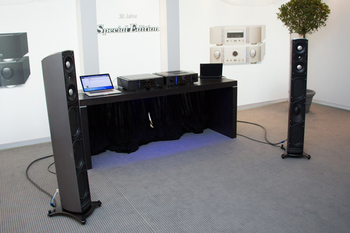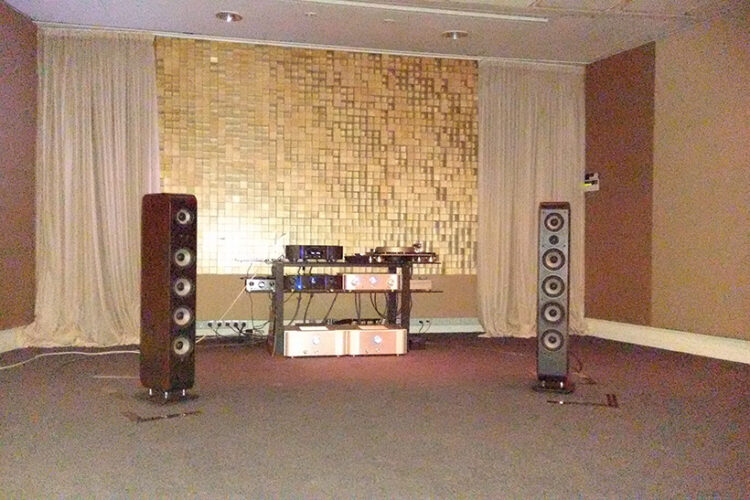^^ -Matt-, kinda, Griesinger has experimental messure of this kind of stuff called LOC, but it's for real sources and not for phantom image. Phantom image is product of our auditory system, and relatively fragile as an illusion in a way, related to LOC of course assuming same thing needs to happen in auditory system.
You could use your own auditory system to wonder about, and even measure, clarity: put the speakers quite close together, and use quite close listening distance, IOE small stereo triangle. This should allow auditory system lock in to the phantom center in a way, get neural stream separation and clarity and accurate localization happens. The other state is that there is no stream separation, auditory system cannot lock in and the sound remains hazy, or how ever you want to describe it. Stream separation happens when original audio harmonic information is retained well enough, the brain locks in to amplitude peaks that happen harmonics aligning every fundamental, and which for example loud early reflections ruin.
I speculate you can switch between the two perceptions by moving a bit, by changing listening distance. Transition between the two can be quite sudden, repeatable, and you can move at will to utilize your own auditory system as an AB test facility and learn by perveiving what is clarity, good localization, how is your envelopment, how does your room sound, what kind of DI would support what you want to hear, and so on your auditory system affects a lot how you perceive your system (stereo) sound.
your auditory system affects a lot how you perceive your system (stereo) sound.
You could use your own auditory system to wonder about, and even measure, clarity: put the speakers quite close together, and use quite close listening distance, IOE small stereo triangle. This should allow auditory system lock in to the phantom center in a way, get neural stream separation and clarity and accurate localization happens. The other state is that there is no stream separation, auditory system cannot lock in and the sound remains hazy, or how ever you want to describe it. Stream separation happens when original audio harmonic information is retained well enough, the brain locks in to amplitude peaks that happen harmonics aligning every fundamental, and which for example loud early reflections ruin.
I speculate you can switch between the two perceptions by moving a bit, by changing listening distance. Transition between the two can be quite sudden, repeatable, and you can move at will to utilize your own auditory system as an AB test facility and learn by perveiving what is clarity, good localization, how is your envelopment, how does your room sound, what kind of DI would support what you want to hear, and so on
Last edited:



